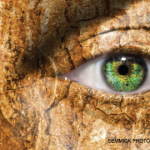Can merely crossing your fingers change the way your brain perceives pain when you touch different stimuli with three fingers?
Perhaps so, according to a new study by UK-based researchers, when taken into context with the immediate environment. Changes in posture could potentially provide a way to influence chronic pain if basic science results lead to clinical interventions, researchers say. Dr. Elisa Raffaella Ferre, a postdoctoral researcher at the Institute of Cognitive Neuroscience at University College London and colleagues probed the fingers of test volunteers with innocuous warm and cold stimuli when fingers were crossed and uncrossed.
What they found was that the cold stimulus induced a burning, potentially painful sensation called thermal grill illusion (TGI) when the fingers were crossed. In addition to the different sensations between crossed and uncrossed fingers, the researchers found that the cold finger positioned between the two warm fingers produced a painful effect, but when positioned to the outside, burning was reduced.
“Critically, our work showed that the posture (crossed or uncrossed fingers) itself is not so important,” Dr. Ferre told Reuters Health by email. “Rather, the interaction between posture and spatial pattern is crucial. The brain is taking into consideration the spatial pattern of multiple thermal stimuli.”
“Our results showed that TGI depends on the external spatial relations between multiple stimuli,” Dr. Ferre said. “When the index finger was crossed over the middle finger, the sensation of burning heat on the middle finger was reduced. However, such burning heat sensation was ‘restored’ if the index finger was cooled, the middle and ring were warmed, and the index finger was then crossed over the middle finger. Thus the interaction between stimuli is important, and we showed that this interaction depends on spatial patterns: warm-cold-warm pattern activates the brain’s pain systems more than cold-warm-warm pattern.”
Their results show that spatial relations between body sites with different afferent input can influence nociceptively mediated thermal sensation, Dr. Ferre and colleagues wrote in an article published online March 26 in Current Biology. “This is a basic study of the brain’s mechanisms for signaling acute experimental pain,” Dr. Ferre said. “We can only speculate what is the practical implication for central pain diseases, such as chronic pain.”
“However,” she continued, “our study raises some questions that people affected by chronic pain might want to think about: Does the level of pain change by applying additional stimuli … by moving the painful part of the body relative to other body parts? Our results, indeed, suggest that changing the spatial pattern of interacting stimuli can modulate the brain’s pain system,” she said.

